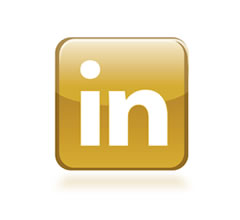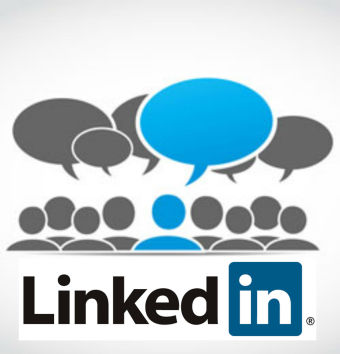 One of the first key points of advice I have for physicians interested in non-clinical career expansion is get on LinkedIn.
One of the first key points of advice I have for physicians interested in non-clinical career expansion is get on LinkedIn.
Why? Well, for one, it is a major player in the world of networking 2.0. It has taken the place of the rolodex and become the place to present your professional presence online. For physicians that have not begun networking, it is a great way to start expanding your circle of contacts from outside of your direct friends and colleagues, to those who are “friends of friends”, 2nd degree connections, and professionals interested in the same things you are.
For docs that are considering expanding into industry, I recently read that more than 60% of Fortune 100 companies use LinkedIn to save time and recruit/hire best candidates. This means that recruiters from these organizations – some of the largest and most recognized in the world – are on LinkedIn every day to find and vet job candidates. Hence another reason why you should be on it, and making the most of it.
Here are some ways to make your LinkedIn account work for you:
- Make sure that you have a comprehensive, detailed profile set up. This is the first place people will look to get a sense of who you are. You want it to be a solid overview of your professional direction, your accomplishments, and a snapshot view of what you “bring to the table”. Make sure it includes a picture – professional picture only, so that viewers can get a visual of you. And skip the personal details on your profile – there is no need to include your birthday, your home address, or your personal interests. This isn’t Facebook! Your professional email and (optionally) your work phone number will suffice. Make sure to check the box that you are open to career opportunities if that’s what you want to reflect. And make sure you use keywords in your profile set up, so if someone (a recruiter perhaps) is searching for a “CMO”, you will show up in search results.
- Make your profile (or most of it) public so that people who are not within the LinkedIn network can still view it without having to set up an account (although I don’t know why they wouldn’t!).
- Join Discussion Groups in your areas of interest. Do a search under “groups” for keywords that you’re particularly passionate/knowledgeable about. For example, if you search for “Healthcare IT” over 5,000 groups are listed! Be particular, and sign up to join the ones you think would be best (i.e., have a large network, are reputable). Joining a number of groups will keep you actively engaged with a strong network of people with similar interests, and it will also drive traffic to your profile.
- Participate! Once you’ve signed up for groups, go on them regularly to either post questions / discussion points, or to participate in dialogues going on over particular topics. You’ll be amazed at what you can learn from other like-minded professionals. You can also quickly build a reputation as a subject matter expert in your area of interest. The key to success? Contribute thoughtfully and intelligently – your answers become your online professional personae, and you don’t want to come across negatively. If you post questions, make sure they are of a relevant, interesting topic that you think might be of use to the others in the group. And if people answer, make sure to thank them.
- Don’t try to “sell”. Add value instead. One of the things I’ve seen be the kiss of death for peoples’ LinkedIn reputation is the “over-selling” of their products or services to their LinkedIn contacts or within their Discussion Groups. The purpose of these forums is to network, and if networking is truly about building relationships and looking for strategic alliances, then the better approach is to simply add value. You won’t need to puff up yourself or your products/services if you simply provide something – be it an opinion, a resource – that gives back to the people in your network. If they find it useful they will come to you, usually by checking out your profile and seeing who you are and what you do. That is why having a “meaty” profile matters.
- Make connections. Your network is a good reflection of your professional reach. If you only show 5-10 connections, people don’t know what to think … that you’re a late adopter? That you’re a technophobe? That you don’t have any friends or colleagues? At least 30-60 connections gives a much better impression for people viewing your profile, so the effort it takes to connect with others is worth it.
- Protect your network. My rule of thumb is to connect with people that are either 1) people I’ve worked directly with and are my “trusted colleagues” that I can vouch for, 2) people that I’ve met through networking events, conferences, etc., who I know fairly well, 3) people that are work “acquaintances”, but who I am confident will be value-added members of my network, 4) people that are connections of my trusted colleagues, who basically have credibility by affiliation, or 5) people that are members of my trusted LinkedIn groups, based on the same reason as #4. There are people who will connect with anyone and everyone simply to build their network and rack up numbers. I am not that way. Since I view my LinkedIn network as a trusted source of friends, colleagues and professional contacts – as well as a group that overall reflects upon my professional presence online – I make sure that I choose my connections wisely.
For a great series of articles on how to make LinkedIn work for you, see here: http://linkedintelligence.com/smart-ways-to-use-linkedin/.
And for those of you that are really new to LinkedIn (the majority of physicians that I talk to!), here is a real “how-to” for getting started : http://www.dummies.com/how-to/internet/Blogging-Social-Networking/LinkedIn.html
See you on LinkedIn!
 Getting in to the Medical Spa MD LinkedIn Group might be harder than you think. We only approve about 30% of the people who want to join.
Getting in to the Medical Spa MD LinkedIn Group might be harder than you think. We only approve about 30% of the people who want to join.





